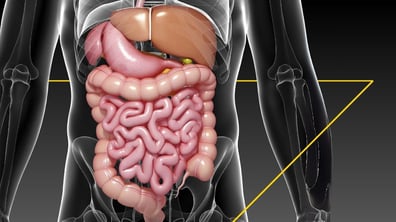As the world becomes more interconnected, we see growing demand for global oncology studies
Oncology trial starts reached historically high levels in 2021, and we see this trend continuing and accelerating 2023, raising the competition among pharmaceutical sponsors. According to Grand View Research, the global oncology clinical trials market is expected to grow at a compound annual growth rate of 5.4 percent from 2020 to 2027 to reach $16.6 billion by 2027.1 Key contributing factors toward Phase 3 clinical success are End-of-Phase 2 (EOP2) meetings with regulatory agencies, savvy clinical trial design, country selection considerations operational agility, and data accuracy.
Conduct End–of–Phase 2 Meetings with Regulatory Agencies
At the end of Phase 2, a decision to initiate Phase 3 oncology trials is made that involves the commitment of considerable financial and human resources. Engaging in an EOP2 meeting with regulatory agencies is a critical step to help reduce risk and ensure the success of any Phase 3 clinical development oncology program. Both the U.S. Food and Drug Administration (FDA) and the European Medicines Agency (EMA) understand the value of holding EOP2 meetings with companies. They generally agree the purpose of EOP2 meetings is to determine the safety of an investigational drug candidate proceeding to Phase 3, and to evaluate:
- Phase 3 plan and protocols
- Adequacy of current studies
- Plans to assess pediatric safety and effectiveness
- Any additional information necessary to support a marketing application for the product and indications under investigation
- Chemistry, Manufacturing and Controls readiness for Phase 3
It is important to account for this feedback in the overall clinical development timeline. That said, getting valuable regulatory input from an EOP2 meeting will help ensure a successful Phase 3 clinical development program and set the stage for filing marketing applications (NDA/BLA), saving companies both time and money.
Optimize Phase 3 Study Design
Once a “go decision” is made following the EOP2 meeting, it is time to design the global Phase 3 trials. However, oncology is a highly competitive market, and clinical and translational cancer treatment strategies are evolving at an extraordinary rate, making the need to quickly and effectively design Phase 3 trials a paramount concern. It is important at this step to include key opinion leader (KOL) and principal investigator (PI) review of the protocol thereby ensuring investigator stakeholder engagement with enrollment and execution of the trial.
The PIs also will help analyze the data and report the results of the research study. It is important to share the Phase 2 data with the PIs to help differentiate the drug candidate from other drugs and generate excitement. In fact, enthusiasm from PIs is one of the most important factors associated with the positive recruitment of oncology patients.

Leverage Geographic and Regulatory Advantages
Global oncology trials have the potential benefits to expedite the recruitment of patients, test treatments in diverse patients, and facilitate the study of rare tumors or specific molecular subtypes. There are several important considerations when contemplating global Phase 3 clinical trials. Different countries, for example, may vary in complexity of regulatory requirements, the cost of conducting trials, and logistical challenges associated with ethics review, drug supply, and biospecimen management. New medical technologies such as cell and gene therapies and oncolytic viruses only add regulatory complexity.
Three strategies to help navigate global challenges:
- First, consider the patient prevalence in a particular country when selecting study sites. In other words, focus on countries that have the highest prevalence to optimize trial recruitment.
- Second, conduct a feasibility study to assess internal and external capability, and ensure alignment of the clinical trial study design, dose of investigational product, comparator, and patient type with the regulatory agency in a specific country.
- Third, consider developing country-specific protocols or protocol amendments to address any local concerns and the potential impact that country-specific protocols may have on the overall statistical analysis plan.
Prepare for the Unknown and Stay Agile
When conducting a global Phase 3 multicenter trial, it is important to maintain flexibility and dynamic response for your trial to succeed. Adaptive design is one approach to ensure drug development programs are efficient. According to the FDA’s guidance Adaptive Designs for Clinical Trials of Drugs and Biologics Guidance for Industry, an adaptive design is defined as a clinical trial design that allows for prospectively planned modifications to one or more aspects of the trial design based on accumulating data from subjects in the trial.2 Specifically, the modifications to the design are based on a futility analysis (e.g., interim analysis) of data obtained from subjects in a trial while that trial is ongoing and is not restricted to cases in which there are formal between-group comparisons. The observed data used in the futility analysis can include one or more types, such as baseline data, safety outcome data, pharmacokinetic, pharmacodynamic, biomarker data, or efficacy outcome data. A key benefit of conducting an interim futility analysis is that it may substantially increase the probability of stopping early when there is no treatment effect, saving companies time and money.
Leverage a Dynamic Patient Data Cleaning Strategy
Clean clinical data is the basis for medical discovery and innovation. Dynamic patient data cleaning is the process of repairing or removing data that is inaccurate, incorrectly formatted, or structured, duplicative, or incomplete.& It is important to establish data cleaning expectations up front and track data cleanliness from the beginning of the study and throughout the interim monitoring visits. We recommend incorporating Clean Patient Tracker tool early in study enrollment to systematically identify areas where monitoring can result in cleaning and soft locking patients as early as possible. Of course, the priority is to check the data for patients who have completed the study. The benefits of dynamic patient data cleaning include finalizing clinical study reports, submitting regulatory filings, and obtaining product approvals on time and on budget – the goal of every pharmaceutical company.
Key Takeaways
Precision for Medicine has the expertise and operational scale to help our clients navigate the complex oncology clinical trial landscape. Whether it’s EOP2 meetings with regulatory agencies, savvy clinical trial design, site selection, operational agility, or data cleaning, our team of experts is ready to help you realize the potential of your oncology clinical development program.




